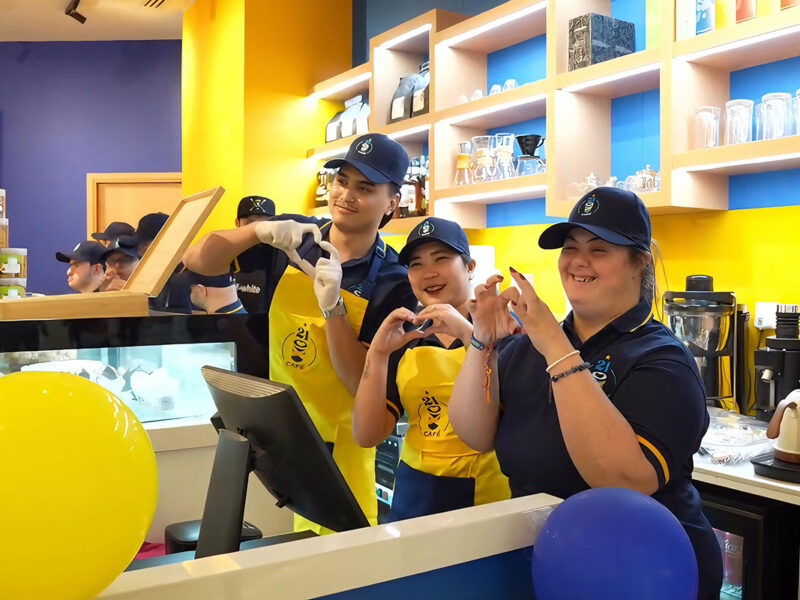If you are thinking of asking Thomas Lundgren for advice on how to be a successful entrepreneur, maybe you should think again.
“You need to be a little naïve and stupid. It helps. I was naïve and stupid. It helped.”
He can say that again.
Since opening his first store in Abu Dhabi in 1996, the founder of THE One has opened 19 so-called “theatres and boutiques”. He has 725 staff on the books, and brands such as THE One Fusion and THE One Junior, on top of the widely known furniture stores. And last month saw the launch of THE One Basics, which is part of his long running grand plan to take on IKEA head on.
“Come on, you are irritated when you go to IKEA aren’t you? You have to pick up all that [stuff] in these aisles. You hate it. We all do. You do it because of the prices,” he says.
Given that in the 12 months to August 2014, IKEA raked in a profit of $3.7bn on the back of sales of $31.22bn, the Swedish giant with 351 stores in 46 countries is clearly doing something right. But Lundgren, with just a single THE One Basics store so far open (and ten more to come), has other ideas.
Much like his rival, Lundgren’s newest venture aims to provide the best quality furniture at the lowest prices. By using discontinued fabrics at low prices and recycling old designs once created and sold at THE One, Lundgren is confident he has hit the nail on the head.
“All my manufacturers, when they have something they want to get rid of, they send me an offer. For example, the plastic chairs on the entrance, they’re changing the colours on them. So I bought all the stock in the old colours. That was sold in THE One for AED395, eight years ago. Now it’s AED169,” he says.
But make no mistake, THE One Basics is not like IKEA.
“I have a very simple rule when it comes to quality at Basics, that it should never ever be under IKEA, it should be over IKEA, never under IKEA quality. IKEA’s quality is accepted because it’s the biggest retailer in the world.
We should never be that, we should be above that,” says the self-proclaimed ‘ideas man’.
Despite uneasy feelings about the old kid on the block, it’s Lundgren’s only competition, he says. Everybody else is just a trader.
“If you look at Home Centre prices today, they’re not low-end any more. They’re mid-range. If you’re looking at market prices, they’ve gone up. Things bought in Asia, salaries for people in Asia, they’re getting higher.”
Lundgren is not impressed.
He self-designs 60 percent of THE One’s merchandise and changes the collection every day.
“That’s the fun part,” he says. “It’s like a toy shop where I can design anything I want.”
But it’s not all fun and games in furniture retail, even for the passionate.
“When people ask me about starting in retail, [I’d say] you have to be optimistic. You think about all the fun. I’m going to go and buy nice things and design nice things. That’s like being a rock star and the only thing you see is when they’re on stage and everybody’s screaming.
“But when you speak to the musicians, they have no private life, they can’t go anywhere, and you don’t see the back side of it,” he says, referring to his own dream of becoming a rock star.
“It’s the same thing. If you forget about the cool stores, all the work behind it, if I had known that, I’m not sure – you know today I’m proud of it, that I survived in it – but I don’t know if I would have done it. Because it was so many years of survival and so much hard work. It still is hard work. But I don’t know, should you tell people about it? Because then they don’t become entrepreneurs,” he says.
Lundgren’s advice? Don’t start a furniture shop.
“To be successful in furniture you need a lot of money. It’s very cash-intensive. This is logistics. This is big warehouses. When we buy sofas, the containers for sofas cost a lot of money.
“Sometimes I make fun and say, I’m in the logistics business,” he says.
Whether he likes it or not matters little now. Lundgren is already a successful furniture retailer.
That he might owe his entire career to IKEA is another story.
Having wanted to leave Sweden, Lundgren saw an ad for IKEA in Saudi Arabia and decided to take it. He then started working as a decorator for the brand.
“My father died when I was five years old. So my mother was really doing a remarkable job. We had very little means. So every month, we were waiting for the money, insecurity etc. I dreamed there must be something much better. I just wanted to move out of Sweden, I just thought there must be a better life for me somewhere else.”
But he didn’t exactly hit the big time on day one. He first started dreaming up the idea of running his own show in 1993, but spent a full year going from bank to bank, and being rejected by everyone. Nobody was in slightest bit interested in lending in the $4m he forecast was needed to get the venture off the ground.
In 1995, he teamed up with Rashed Al Mazroui and Shakir Abal, and after several months of “blood, sweat and tears” managed to open his first shop in Abu Dhabi. By his own admission, that proved “a disaster” and he relocated to Dubai. Worse was to come. “Fires, floods, cash flow problems, people problems, heart problems, bank problems, supplier problems, psychological problems, you name it, we have been through it,” he states on his own website.
But Lundgren rode out the many storms, and certainly doesn’t have to worry about a better life now. The 53-year-old self-made tycoon is worth an estimated $150m. He has over a dozen stores spread across the Middle East with plans to open in Baku, Azerbaijan.
As for longer-term goals, they include: “Taking over the world. And buying IKEA in ten years’ time, for one dollar,” he says.
That may never happen — but you can’t fault him for trying.









